Environmental Dimensions of Bioenergy Development Les dimensions environnementales du développement des bioénergies Ökologische Dimensionen in der Entwicklung im Bereich Bioenergie
Les dimensions environnementales du développement des bioénergies
Ökologische Dimensionen in der Entwicklung im Bereich Bioenergie
Summary
enEnvironmental Dimensions of Bioenergy Development
A major impetus for the development of bioenergy in the US and Europe has been the search for alternatives to fossil fuels, particularly those used in transportation. While bioenergy has the potential to be more environmentally friendly, particularly in terms of reducing greenhouse gas emissions, it may also have unintended negative consequences. Characterising and quantifying the relationship between bioenergy production and the environment poses a considerable challenge. Much of the focus has been on the implications of expanded use of biofuels. The US and EU have dealt with the challenges posed by biofuel policies in different ways and there are concerns that the accounting of environmental effects remains incomplete. The development of integrated assessments covering such factors as soil productivity, water quantity and quality, biodiversity and ecosystem resilience, and wildlife habitat, in addition to greenhouse gas emissions could provide a more comprehensive picture of the environmental implications of bioenergy development. In combination with an improved assessment of the effects of indirect land use change in other countries and an expansion of sustainability criteria to biomass production in general, this could help in integrating energy, agricultural, environmental and international trade policies to develop renewable energy in a sustainable way.
Abstract
frLa recherche d’alternatives aux carburants fossiles, en particulier ceux utilisés dans les transports, a créé un élan majeur pour le développement des bioénergies aux États-Unis et en Europe. Les bioénergies peuvent devenir plus respectueuses de l’environnement, en particulier en termes de réduction des émissions de gaz à effet de serre, mais elles peuvent également avoir des conséquences négatives non désirées. Caractériser et quantifier la relation entre la production de bioénergies et l’environnement représente un défi considérable. On s’est beaucoup préoccupé des incidences d’une augmentation de l’utilisation des biocarburants. Les États-Unis et l’Union européenne ont abordé différemment les défis posés par les politiques en matière de biocarburants et l’on s’inquiète que la prise en compte des effets environnementaux reste incomplète. Le développement d’évaluations intégrées considérant, en sus des émissions de gaz à effet de serre, des facteurs tels que la productivité des sols, la quantité et la qualité de l’eau, la biodiversité et la résistance des écosystèmes, et les habitats naturels pourrait offrir une image plus complète des incidences environnementales du développement des bioénergies. Combinéà une évaluation améliorée des effets des changements indirects d’usage des terres dans les autres pays et à l’emploi d’un plus grand nombre de critères de durabilité pour la production de biomasse en général, ceci pourrait aider à intégrer les politiques en matière d’énergie, agriculture, environnement et commerce international pour un développement des énergies renouvelables qui se fasse de manière durable.
Abstract
deIn den USA und in der EU besteht eine der Haupttriebfedern für die Entwicklung im Bereich Bioenergie unter anderem in dem Wunsch nach Alternativen zu fossilen Brennstoffen, vor allem für den Bereich Transportwesen. Obwohl sich Bioenergie als umweltfreundlicher erweisen könnte – besonders im Hinblick auf die Senkung von Treibhausgasemissionen – könnten damit auch unbeabsichtigte negative Auswirkungen einhergehen. Es stellt eine besondere Herausforderung dar, die Beziehung zwischen Bioenergieerzeugung und Umwelt zu identifizieren und zu quantifizieren. Bei den Auswirkungen drehte es sich bislang überwiegend um die verstärkte Verwendung von Biokraftstoffen. Die USA und die EU haben sich den Herausforderungen der Biotreibstoffpolitik unterschiedlich gestellt, und es werden Bedenken laut, dass die Bilanzierung der Umweltauswirkungen unvollständig bleibt. Die Entwicklung eines integrativen Bewertungsmodells, das neben Treibhausgasemissionen auch Faktoren wie Flächenproduktivität, Wassermenge und -beschaffenheit, Biodiversität und Widerstandsfähigkeit des Ökosystems, sowie Lebensraum für Wildtiere aufgreift, könnte ein umfassenderes Bild von den Umweltauswirkungen in der Entwicklung im Bereich Bioenergie liefern. Ein nachhaltiger Weg hin zu erneuerbaren Energien könnte durch die Integration von Energie-, Agrar-, Umwelt- und internationalen Handelspolitiken entwickelt werden, wenn ebenfalls die Auswirkungen indirekter Landnutzungsänderungen in anderen Ländern und grundsätzlich eine Ausweitung der Kriterien der Nachhaltigkeit bezogen auf die Erzeugung von Biomasse berücksichtigt würden.
A major impetus for the development of bioenergy in the US and Europe has been the search for alternatives to fossil fuels, particularly those used in transportation. While bioenergy may have the potential to be more environmentally friendly in terms of reduced greenhouse gas (GHG) emissions and pollution it may have unintended negative environmental consequences, particularly relating to changes in land use. This article outlines environmental concerns linked to bioenergy production. It compares the situation in the US and EU in terms of environmental impacts and policy approaches used to address these. A concluding summary outlines key issues to be considered in the environmentally sustainable development of bioenergy.
Bioenergy and the environment
Biomass can be used to generate various forms of bioenergy, including electricity, heat and biofuels (liquid and gaseous). Bioenergy can be produced from almost any kind of biomass: traditional commodities, such as corn (maize), rape, soybeans and sugar crops; a variety of energy crops, such as switch grass; woody biomass from forestry and wood-based industries; farm, municipal and industrial organic waste; and marine resources, e.g. seaweed. Consequently, the environmental impacts of bioenergy production can vary enormously. Biomass production that places additional demands on scarce natural resources, particularly land and water, and increases nutrient, pesticide and water use can have negative implications for environmental quality, biodiversity and GHG emissions. In contrast, bioenergy production can generate environmental benefits, e.g. when animal manure is used to generate biogas rather than being applied directly to the land or when food waste is turned into energy rather than entering landfills.
Increased demand for bioenergy feedstocks has implications throughout the agricultural sector due to potential competition with other crops for land and other inputs (see Figure 1 for a biofuel example). Changes in crop mix or crop rotations can generate environmental impacts if land is reallocated from food and fibre production to biomass for energy. An important environmental effect can arise if land that was previously used for other purposes, such as grassland, wetlands, or forests or to support vulnerable habitats is brought into production. A recent study indicates that direct land use changes generated by the production of biofuels can have a significant impact on GHG balances and other environmental factors, such as eutrophication of water bodies (Börjesson and Tufvesson, 2011).
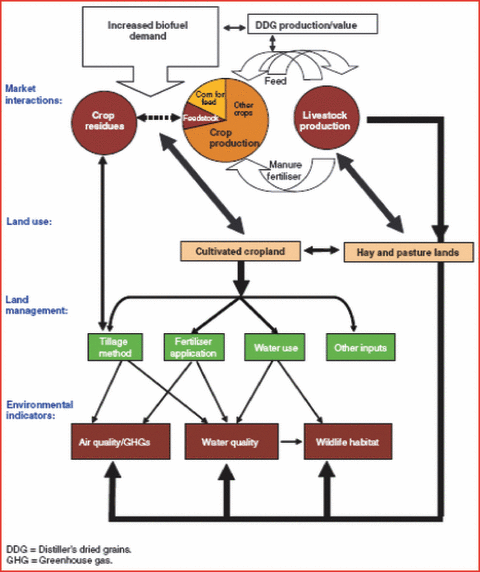
Environmental impact of biofuel demand in the USSource: USDA, Economic Research Service.
Effects can also be generated in other regions as a result of changes in market prices or international trade (Marshall et al., 2011). Indirect land use change (ILUC) has been the focus of considerable debate, since its inclusion in bioenergy assessments can reduce or even reverse apparent environmental benefits, particularly reductions in greenhouse gas (GHG) emissions in comparison to fossil fuels. For example, if increased US maize production for ethanol reduces soybean production (and exports), changes in world prices may provide an incentive to increase soybean production on land previously used as pasture in Brazil, which in turn could push cattle farming into the Amazon. The link between maize production and the loss of Amazon forest would not be direct, but some form of relationship, reverberating through land and commodity markets may exist nonetheless. Characterising the nature of that relationship, and quantifying the implications, is one of the greatest challenges in evaluating the environmental implications of biofuel policies.
Environmental implications of bioenergy development in the US
US bioenergy development has largely centred on the production of ethanol from maize. Malcolm et al. (2009) use a simulation model to examine the environmental implications of meeting US goals for ethanol production for 2015 using a suite of indicators. The results suggest that farmers will respond to biofuel targets by increasing applications of nitrogen fertiliser and pesticides, which is likely to exacerbate nutrient leaching and run-off and increase soil erosion. Predicted impacts vary spatially and are associated with increases in total crop acreage as well as changes in crop mix and management intensity. Figure 2 demonstrates the effects for nitrogen run-off to surface water. Results suggest substantial differences in magnitude (illustrated by the size of the circles) and intensity relative to the change in land use. Circles above the line indicate an intensification effect (the increase in nitrogen run-off is greater than that in crop acreage) and vice versa.
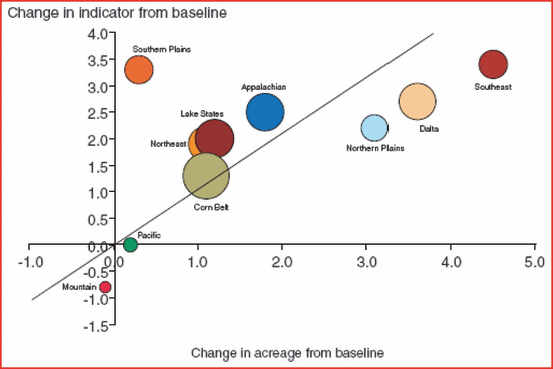
Impact of biofuel demand on nitrogen run-off in the USNote: Size of circle represents the absolute change in the indicator, demonstrating how much a region contributes to the national increase. The circle’s position, relative to the diagonal line, indicates how much of the change in nitrogen run-off is caused by increases in total acreage and how much is influenced by changes in crop mix and management. Source: Malcolm et al. (2009).
While early biofuels policies in the US focused on liquid biofuels from ‘first generation’ feedstocks such as maize, current policies and research efforts are being directed to ‘second generation’ cellulosic technologies, ‘third generation’ processes that convert feedstocks directly into gasoline, and the use of energy crops and residues for electricity production. Because cellulosic energy crops are not currently produced on a commercial scale, assessment of potential environmental impacts is largely speculative. Second generation technologies offer potential environmental benefits over grain-based biofuel, including higher yield per acre from a diverse array of feedstocks and perennials requiring less intensive management than annuals. Perennial energy crops may also be more wildlife friendly. Crop residues, such as wheat straw and corn stover, can also provide potential low-cost and lower-impact energy feedstocks. As they are co-produced with other crops they ‘share’ responsibility for inputs used and impacts generated. But removing crop residues can have significant environmental effects, including changes in soil carbon, increased run-off and soil erosion, and increased fertiliser applications to replace nutrients lost through residue removal.
The production of bioenergy feedstocks competes for land in other uses. One potential source of land is that enrolled under the Conservation Reserve Program (CRP). The CRP pays landowners to retire more than 31 million acres (∼ 12.5 million hectares) of environmentally sensitive cropland. Increased demand for biofuels may induce landowners to bring some of this land back into production, which could negatively affect environmental services such as the control of soil erosion and provision of wildlife habitat. Increasing rental rates will likely be required under this voluntary land retirement programme to maintain enrolled acreage and the ecosystem services it provides if high crop prices persist (Hellerstein and Malcolm, 2011).
“Les effets négatifs et non désirés du développement des bioénergies sur l’environnement, en particulier ceux liés aux modifications de l’utilisation des terres, sont difficiles à prévoir et à contrôler.”
US policy approaches to addressing potential environmental impacts
To date, the most sophisticated efforts to integrate an environmental dimension into US biofuel policies have been associated with the application of GHG reduction requirements under California’s Low Carbon Fuel Standard (LCFS), and the Renewable Fuel Standard (RFS) component of the federal Energy Independence and Security Act (EISA) (see the article on biofuels in this issue). The LCFS requires that the carbon content of transportation fuels used in California be reduced by 10 per cent by 2020. The RFS mandates blending of fixed volumes of renewable fuels on an increasing annual schedule, with requirements for meeting category-specific GHG reduction thresholds ranging from 20–60 per cent relative to fossil fuels. Ensuring compliance with the GHG requirements drove parallel efforts by the California Air Resources Board (CARB) and the US Environmental Protection Agency (USEPA), to design carbon quantification and accounting protocols for the production and use of biofuels. Both CARB and the USEPA estimate that GHG emissions from global indirect land-use change induced by changes in domestic crop production patterns are a significant fraction of the total GHG emissions associated with biofuels (Figure 3). The figure also illustrates emissions from ethanol production compared to gasoline. It is notable that an ‘average’ US ethanol plant powered by biomass using 2012 production and conversion technologies is estimated to generate more GHG emissions than gasoline.
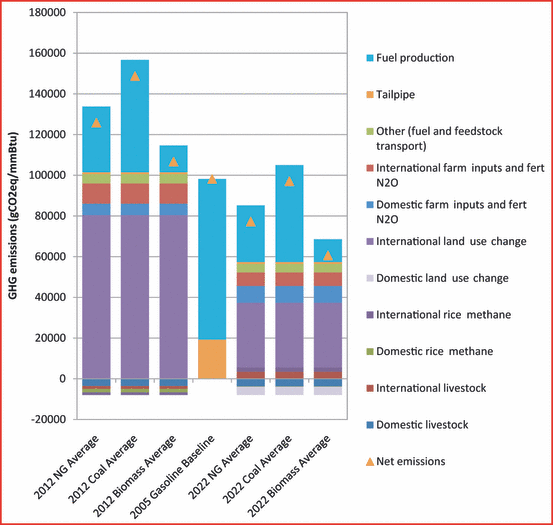
US EPA analysis of GHG emissions for various sources of fuel with 2012 technologies and projected 2022 technologiesSource: EPA (2010).
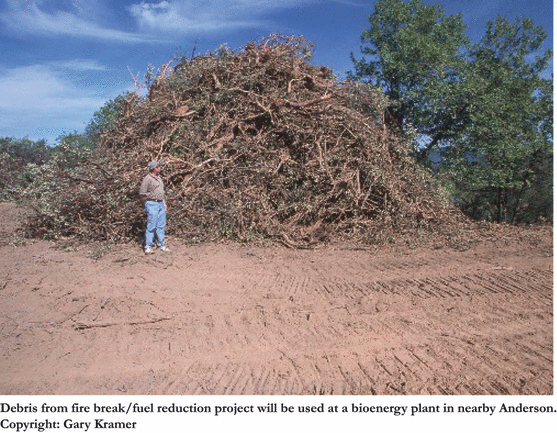
“Unbeabsichtigte negative Umweltauswirkungen in der Entwicklung im Bereich Bioenergie, besonders im Hinblick auf Landnutzungsänderungen, lassen sich nur schwer voraussagen und kontrollieren.”
US biofuel support policies also include compliance requirements for other, non-GHG-related indicators. EISA, for instance, requires that planted crops and crop residues used as feedstocks be harvested from land that during 2007 was actively managed, non-forested, and had already been cleared or cultivated. Planted trees and tree residues must be harvested from non-federal land that has already been cleared and is actively managed. EISA also requires USEPA to assess and report to Congress every 3 years on actual or potential environmental impacts of meeting the requirements of the RFS, including issues related to air, soil, and water quality; water availability; and ecosystem health and biodiversity (USEPA, 2011).
Environmental implications of bioenergy development in the EU
Agriculture is the major user of land in the EU occupying approximately 50 per cent of total land area (EU-27). Compared to the US, there is greater diversity in the domestic production of bioenergy feedstocks. The leading domestic sources are oil crops (mostly oilseed rape) for biodiesel with approximately 4.45 million ha in 2006/2007, cereals (515,000 ha) and sugar beet (53,000 ha) for bioethanol as well as maize (386,000 ha) mainly used in biogas plants. Perennial crops, such as short rotation coppice accounted for less than 1 per cent of EU bioenergy production in 2006/2007.
Oilseed rape is mainly produced using high nutrient and pesticide inputs with consequent risks to ground and surface water. Yet, it performs better in terms of soil erosion than maize, whose cultivation involves long periods of uncovered soil. Recommendations on bioenergy crop mixes are made by the European Environment Agency based on the natural endowment of EU regions. An expansion of perennial crops has been recommended for the Northern parts of Europe. In the Mediterranean zone, crops with relatively low water needs are favoured. Throughout the EU, cereals (excluding wheat) are generally preferred over oilseed rape and maize from an environmental perspective.
One problem often associated with the cultivation of energy crops in the EU (especially with rapeseed and maize) is a reduction in crop rotations and the use of monoculture, with increasing risk of soil loss and declining biodiversity. Expanding biofuel production in the EU is placing additional demands on limited land resources and generating competition with food, feed, fibre and other renewable sources of energy. Estimates of the land suitable for growing energy crops in the EU range from 20 to 59 million ha for a selection of studies from 2001 to 2006 (Dworak et al., 2008).
Expanded EU biofuel use also has significant environmental impacts in other countries as biofuel imports are being generated to meet consumption targets. Projections to 2020 suggest that the bulk of direct and indirect land use change will be caused by the production of feedstocks for biofuels used in transportation. Biodiesel and biogas for electricity generation or heating are likely to play a minor role. Based on national renewable energy action plans, Bowyer (2010) estimates that more than 50 per cent of the bioethanol and 41 per cent of biodiesel by 2020 are likely to come from imports from Brazil, South East Asia and various African countries – where in many cases environmental standards are likely to be lower than in the EU or only weakly enforced. A recent IFPRI study (IFPRI, 2010) that includes global direct and indirect land use change concludes that going beyond a 5.6 per cent share of biofuels in transport fuel in the EU could cause significant environmental harm globally.
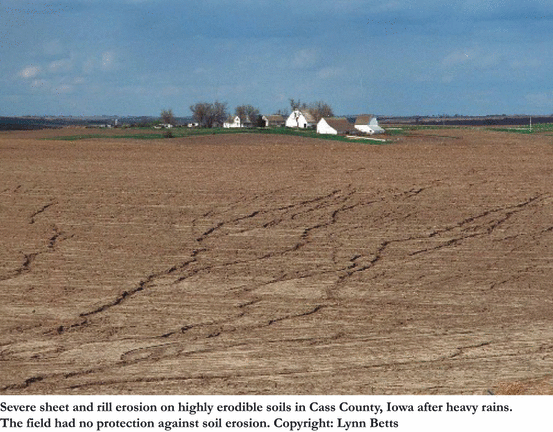
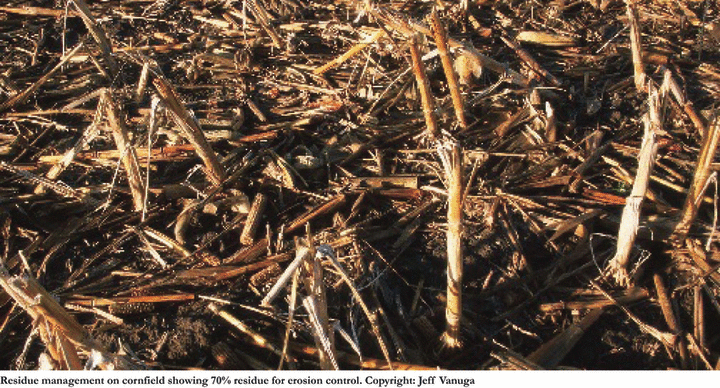
EU bioenergy policy and the mitigation of environmental impacts
The heart of Europe’s climate and energy policy is the EU Renewable Energy Directive of 2009, which sets targets for the use of renewable energy and for bioenergy. It specifies that the EU as a whole must ensure that 20 per cent of total energy consumption will be from renewable sources by 2020. It specifically promotes the use of renewable energy in the transport sector, requiring 10 per cent of all transport fuels be delivered from renewable sources by 2020 in all Member States, with provisos that production is sustainable and that second generation fuel technologies are available.
In order to ensure sustainability the directive requires that all biofuels must reduce GHG emissions by at least 35 per cent compared to fossil fuel, increasing to 50 per cent in 2017 and 60 per cent in 2018. Biomass cannot be derived from natural forests, protected areas and grasslands with high biodiversity value and may not be produced on land with high carbon stocks, such as water-rich areas (e.g. peatlands) or permanently forested areas (see the article on biofuels in this issue). The auditing of sustainability is done by EU Member States, which can define additional requirements. Various schemes for biofuel certification have been developed, such as the ISCC (International Sustainability and Carbon Certification). As of June 2011 seven schemes had been approved by the European Commission.
“Unintended negative environmental effects of bioenergy development, particularly relating to land use change, are difficult to predict and hard to control.”
Since mandatory consumption targets were agreed for biofuels, there has been growing doubt about their environmental implications and this has affected public support. Concerns have been raised by studies showing that the EU methodology for assessing sustainability does not capture indirect land use change. Institutions such as the European Environment Agency as well as numerous environmental NGOs are critical of the current biofuel policy, demanding stronger sustainability requirements and a reduction or suspension of the 10 per cent consumption target for 2020. The European Commission is currently working on an improved assessment of indirect land use change (ILUC), which may result in amendments to EU legislation (see the article on biofuels by Miranda, Swinbank and Yano in this issue).
A parallel European policy debate – although not as prominent as the ILUC discussion centres on the extension of sustainability criteria to the use of solid and gaseous biomass sources in electricity, heating and cooling. The European Commission is currently evaluating the need for legislative proposals involving binding and specific sustainability criteria for biomass used for electricity generation and heating. A report is expected to be issued on this by the end of 2011.
Balancing direct and indirect environmental impacts
In addition to other concerns, such as the security of energy supplies, the search for environmentally friendly alternatives to fossil fuels, particularly those used in transportation, has been a factor in the development of bioenergy in the US and Europe. However, unintended negative environmental effects of bioenergy development, particularly relating to land use change, are difficult to predict and hard to control. Although economic theory suggests that the most efficient way to address these would be to include the full costs of externalities in energy prices, in practice this would be very difficult to achieve. In light of this, recent experience on both sides of the Atlantic suggests that concerns about additional environmental pressures from bioenergy policies might be addressed through the following measures.
- •
An integrated evaluation of environmental effects: while most of the effort has been directed to estimating the effect of biofuels on GHG emissions, a comprehensive evaluation would consider other environmental impacts. These include effects on soil productivity, water quantity and quality, biodiversity and ecosystem resilience, and wildlife habitat quality and quantity. Such an evaluation would also be applied to the production and use of all forms of biomass, not just biofuels.
- •
Derivation of a comprehensive picture of the environmental impacts of national consumption targets for bioenergy, including the effects of imports and indirect land use change.
- •
Revision of national targets in the light of a comprehensive evaluation of sustainability.
- •
International harmonisation in accounting for ILUC and GHG emissions: national targets will, to some extent, ‘export’ environmental impacts to other countries.
- •
A focus on integrating energy, agricultural, environmental and international trade policies to develop the use of renewables in a sustainable way.
Disclaimer
Views expressed in this article are those of the authors and do not necessarily reflect those of the Economic Research Service or the US Department of Agriculture.




